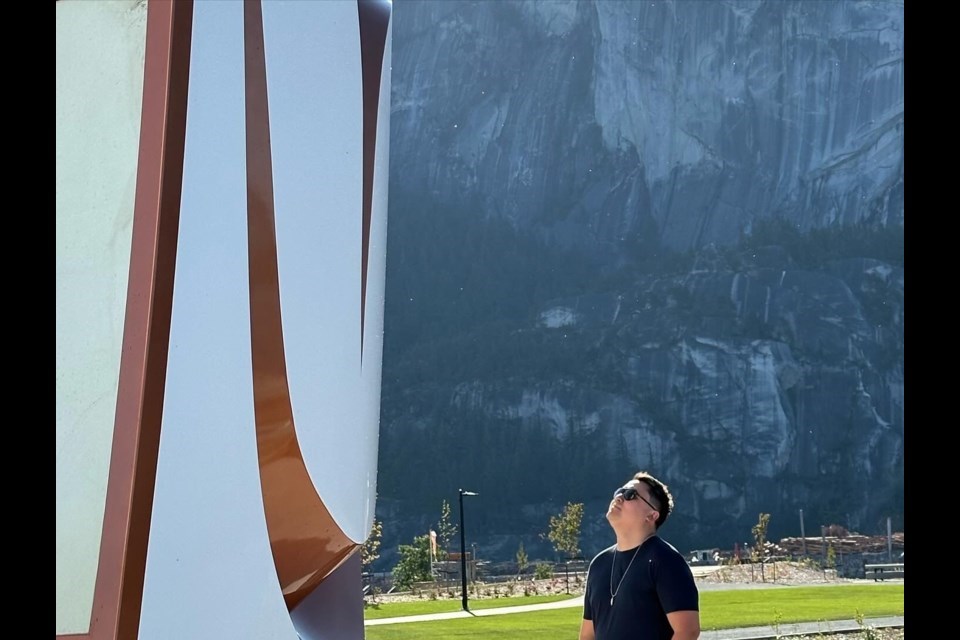The is back in town, running from Aug. 6 to 17, 2024.
The two-week festival features a selection of low-barrier performances, workshops and talks.
The festival also features a range of works that reflect the intersection of traditional and contemporary Coast Salish art.
In the past, the Indigenous art of the Sḵwx̱wú7mesh Úxwumixw (ߣ������Nation) faced challenges due to European contact.
According to The Canadian Encyclopedia, from the late 18th century, European influence disrupted art traditions of the Northwest Coast, including of the Sḵwx̱wú7mesh.
The Canadian government enforced a ban on potlatch ceremonies from 1885 to 1951, impacting the cultural and social fabric of Indigenous communities. This ban was part of a larger assimilation policy towards Indigenous peoples.
During this time, over 400 ceremonial items were taken away, and numerous people were put in prison.
These measures greatly interrupted the ongoing cultural traditions and pushed Indigenous groups to adjust their ways to cope with the rules enforced by colonial powers.
“Historically, many of our art forms were oppressed,” said James Harry, a Sḵwx̱wú7mesh artist whose work is featured at the festival.
He noted that the economic pressures of the time also influenced the adoption of new artistic styles.
“Being in close proximity to Vancouver, our people practiced a more northern formline, which wasn’t originally from this territory. This was largely because many of our members needed to support their families, so they adapted to what the market dictated, even if it wasn’t from here.” This shift in artistic practice highlights the broader impact of colonization on Indigenous art forms.
By the numbers
According to a report by done in 2021 Indigenous artists represent just under 4% of all professional artists in Canada, with approximately 7,500 Indigenous artists across the country. This is slightly lower than the overall Indigenous representation in the Canadian labor force, which stands at 4.2%.
In British Columbia, only 1.8% of artists are Indigenous, and the number is even smaller in Squamish.
Despite these historical challenges, artists like Harry continue to draw inspiration from their cultural heritage.
Welcome Gate
Harry's work, including the “Welcome Gate” sculpture at Sp'akw'us Feather Park, exemplifies the integration of traditional and modern influences.
“For the Welcome Gate, and for many of my pieces, I start by going to the site and spending time taking in the surroundings. That helps inform the conceptual ideas and aesthetic,” said Harry.
The Great Flood narrative, a story that has been passed down through 300 generations in the Nation, is central to this piece.
“I framed each element between the two communities, and that was very purposeful in my approach. The Welcome Gate artwork acknowledges that history while also celebrating and creating a new form of Coast Salish art. It’s done in a respectful way but also pushes the art into new territory,” said Harry.
“Salish art is rooted in nature,” Harry added. “My ancestors were observers of nature, and that inspired the works of art we see today. We didn’t even have a word for ‘art’—everything was interconnected and part of our way of life.”
“The forms themselves can be catalysts for change. They come from the land and are meant to be brought back to the land, reinforcing the idea that these things aren’t separate. The philosophy behind Salish art is like dropping a pebble in water, with ripples moving outward from a central node of energy,” said Harry.
Competition
While Indigenous artists like Harry continue to create, they face ongoing challenges, particularly in the competitive landscape of public art.
“One current challenge is competing for space on our own territory. Often, when I’m bidding for art contracts, these are competitive bids open to the public, including international artists. So, I find myself competing against international artists for space on our territory,” said Harry.
Harry will be discussing the creation of Welcome Gate in more detail during “An Evening with James Harry,” where he will share a documentary about the creation of the Welcome Gate and engage with the public in a question-and-answer session on Tuesday, Aug.13, at 7 p.m.
“Even if you’re not interested in art, there’s still something you can take away from the piece. It’s accessible to everyone," he said.
Find out more about the ߣ������Arts Festival
Bhagyashree Chatterjee is The ߣ������’s Indigenous and civic affairs reporter. This reporting beat is made possible by the




